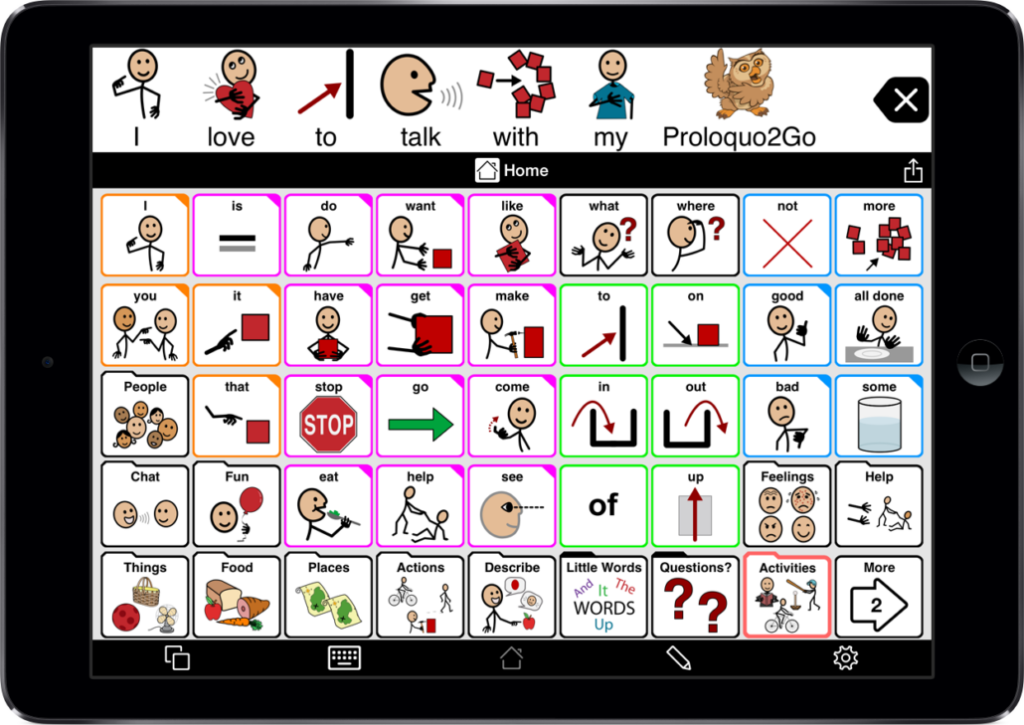
In this free inquiry project, we are exploring technologies that support diverse learners in educational settings. Our learning goal is to discover the best resources to support our learners through the use of differentiated technology. Over the coming weeks, we will share our findings on several tools designed to make learning more accessible and inclusive!
What is it?
The first technology that we explored is Augmentative and Alternative Communication, or, AAC. AAC refers to a variety of methods and tools that support or replace spoken communication. AAC can be an incredibly useful resource for children and adults who have difficulty speaking or are non-verbal. It includes everything from simple picture boards and social stories to advanced apps like Proloquo and TouchChat, which are widely used in elementary schools.
These apps transform iPads into interactive communication devices. Users can tap symbols, words, or phrases, which the app then speaks aloud. Proloquo even includes a companion app called Proloquo Coach designed to help parents and educators facilitate the learning process. This technology allows users not just to select single words but also to build sentences by dragging and dropping icons, which encourages expressive language development.
Availability
AAC apps like Proloquo and TouchChat are available for download on iPads and other tablets. These tools are most commonly used in schools with students who have autism spectrum disorder (ASD), Down’s Syndrome, speech delays, hearing impairments, or other challenges affecting verbal communication.
Limitations
While AAC technology is incredibly beneficial, there are some concerns about potential over-reliance. In one case I encountered, a former educational assistant shared her experience using TouchChat with a student who had Down’s Syndrome. While the app proved to be incredibly helpful, she noted that it led to the student becoming overly dependent on the technology, even though they were capable of speaking more on their own. The technology, in this sense, was almost too effective, and illustrates that, in some cases, students can become so comfortable using the app that they start to view it more as a toy or activity as opposed to a tool for communication. As a result, they may become reluctant to speak without it, even if they are ready and able to do so.
Relation to Open and Distributed Learning
AAC aligns extremely well with the principles of open and distributed learning by providing accessible, personalized communication tools that can be used anytime and anywhere. These apps can extend learning beyond traditional classroom boundaries, empowering students to express themselves independently and actively participate in their education. This approach aligns perfectly with our learning goal: to discover the best resources to support our learners through differentiated technology. AAC apps offer highly customizable experiences tailored to individual communication needs, making learning more inclusive and equitable.
janitpuri
June 21, 2025 — 8:02 pm
Hi, Anna
I really enjoyed your post on AAC technology—it was clear and easy to follow. I liked how you explained both the benefits and the challenges, especially the part about students becoming too reliant on the tools. It reminded me of when I volunteered at a summer camp, and one of the kids used an AAC app to communicate. At first, I wasn’t familiar with it, but it was amazing how quickly I saw how much it helped him join in on group activities and express his thoughts. It really made me appreciate how important these tools are for inclusion.